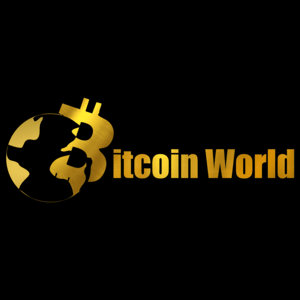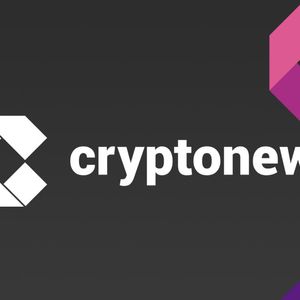ZKsync Faces Critical US Regulatory Probe
5 min read
In a significant development reverberating through the decentralized finance (DeFi) world, Ethereum (ETH) scaling protocol ZKsync has publicly disclosed that it is currently under investigation by several key US regulation authorities. This revelation shines a spotlight on the increasing scrutiny faced by blockchain projects operating within the United States or accessible to its citizens. What’s Behind the ZKsync US Regulatory Probe? The core of the issue, according to ZKsync’s statement on their official X account, stems from concerns surrounding zkEVM-based applications operating within their ecosystem that are accessible to users in the United States. The investigations involve prominent government bodies, specifically the Department of the Treasury and the SEC (Securities and Exchange Commission). The stated focus of these probes is multifaceted, centering on potential violations across several critical areas: US Securities Laws: A major point of contention in the crypto space, regulators are examining whether certain tokens or activities within the ZKsync ecosystem might constitute unregistered securities offerings or trading, particularly as they relate to American investors. AML/KYC Regulations: Anti-Money Laundering (AML) and Know Your Customer (KYC) rules are designed to prevent illicit financial activities. Authorities are likely investigating whether applications and activities on ZKsync comply with these mandates, especially concerning user identification and transaction monitoring. Sanctions Evasion: Given the global nature of blockchain, regulators are keen to ensure that platforms are not being used to circumvent US sanctions against individuals, entities, or countries. This is a growing area of focus for the Treasury Department. This level of scrutiny from both the Treasury and the SEC underscores the complex legal and compliance landscape that even advanced Ethereum scaling solutions like ZKsync must navigate when operating globally. Navigating Crypto Compliance: Why ZKsync is Under Scrutiny The challenge of crypto compliance is not new, but it takes on added complexity with scaling solutions that enable a wide array of decentralized applications (dApps). ZKsync’s zkEVM technology aims to provide a high-throughput, low-cost environment for Ethereum dApps, effectively extending Ethereum’s capabilities. However, the very accessibility and decentralization that make these platforms powerful also raise compliance questions for regulators. Regulators are increasingly looking at the facilitators of activity within blockchain ecosystems. While ZKsync itself is a protocol, the dApps built on it, the tokens involved, and the users interacting with them fall under the purview of these investigations. The fact that US users can access these applications makes the platform subject to US jurisdiction. Key questions regulators might be exploring include: Are tokens issued or traded on ZKsync considered securities under the Howey Test or other legal frameworks? What measures, if any, are in place at the protocol or application level to identify users and prevent money laundering? How is ZKsync ensuring that sanctioned individuals or entities are not using the platform? The involvement of both the SEC (traditionally focused on securities) and the Treasury (focused on financial crimes, AML, and sanctions) highlights the broad scope of the government’s concerns regarding decentralized technologies. How Does This Affect Ethereum Scaling and zkEVM? ZKsync is a prominent player in the race for effective Ethereum scaling , utilizing zero-knowledge proofs to bundle transactions off-chain and settle them efficiently on the Ethereum mainnet. Its zkEVM implementation is particularly significant as it aims for high compatibility with existing Ethereum smart contracts and developer tools. Regulatory uncertainty, however, can cast a shadow over technological advancement. While the investigation is focused on compliance rather than the tech itself, it can impact: Developer Confidence: Teams building on ZKsync might become hesitant if they fear their applications could also face regulatory challenges. User Adoption: Potential users might be wary of interacting with a platform under government investigation. Investment: Future investment into the ZKsync ecosystem or similar zkEVM projects might slow down pending clarity. This situation underscores a broader tension: how to reconcile the decentralized, permissionless nature of blockchain technology with traditional financial regulations designed for centralized entities. The outcome of this probe could set precedents for how other Ethereum scaling solutions and layer-2 networks are treated by US authorities. ZKsync’s Response to the SEC and Treasury In response to the ongoing investigations, ZKsync has stated that it is cooperating with the authorities. They have engaged external legal experts to help navigate the complex regulatory landscape and address the concerns raised by the Treasury and the SEC . This proactive step indicates their intent to work towards a resolution and potentially establish a framework for compliance. Details about the specifics of their legal strategy or the nature of the discussions remain private, which is typical during ongoing investigations. However, the public acknowledgment is a necessary step towards transparency with their community. Interestingly, this announcement followed shortly after a brief security incident where the project’s X account was temporarily compromised to promote a fraudulent ZK token airdrop. While unrelated to the regulatory probes, the timing added another layer of complexity and concern for the community, highlighting the multiple challenges projects in this space can face. Challenges and Implications for the ZKsync Ecosystem The regulatory probe presents several challenges and potential implications: Legal Costs and Resources: Engaging with regulators and legal experts is resource-intensive. Reputational Impact: Being under investigation, regardless of the outcome, can negatively affect public perception. Potential Remediation: Depending on the findings, ZKsync or applications on it might need to implement changes to comply with regulations, potentially impacting user experience or functionality. Market Reaction: News of regulatory issues can sometimes lead to negative price action for associated tokens or a decrease in network activity. For users and developers within the ZKsync ecosystem, this news means increased uncertainty. The path forward will depend heavily on the findings of the investigations and the nature of the dialogue between ZKsync and the US authorities. Actionable Insights for Users and Developers Given the situation, what should individuals involved with ZKsync consider? Stay Informed: Follow official announcements from ZKsync and reputable news sources regarding the investigation’s progress. Understand Risks: Be aware that regulatory actions in the crypto space can lead to platform changes, service disruptions, or impacts on token value. Evaluate DApp Compliance: If you are a developer building on ZKsync, consider seeking legal counsel regarding the compliance requirements for your specific application, especially concerning US users. Practice Caution: Be extra vigilant against scams, as seen with the recent X account compromise. Official communications about regulatory matters or platform changes will come through verified channels. This event serves as a stark reminder that while blockchain technology is innovative, operating within established legal and financial systems requires careful consideration of crypto compliance . Summary: ZKsync Navigates Regulatory Headwinds ZKsync, a key player in Ethereum scaling , is currently facing significant regulatory scrutiny from the US Treasury and the SEC . The investigations target potential violations of securities laws, AML/KYC regulations, and sanctions evasion related to zkEVM applications accessible to US users. ZKsync is engaging legal experts to address these concerns, highlighting the ongoing challenges of crypto compliance in a rapidly evolving landscape. While the outcome remains uncertain, this development underscores the critical need for blockchain projects to proactively consider and navigate the complexities of US regulation to ensure long-term sustainability and foster trust within the ecosystem. To learn more about the latest crypto compliance trends, explore our article on key developments shaping crypto regulation price action.

Source: Bitcoin World



